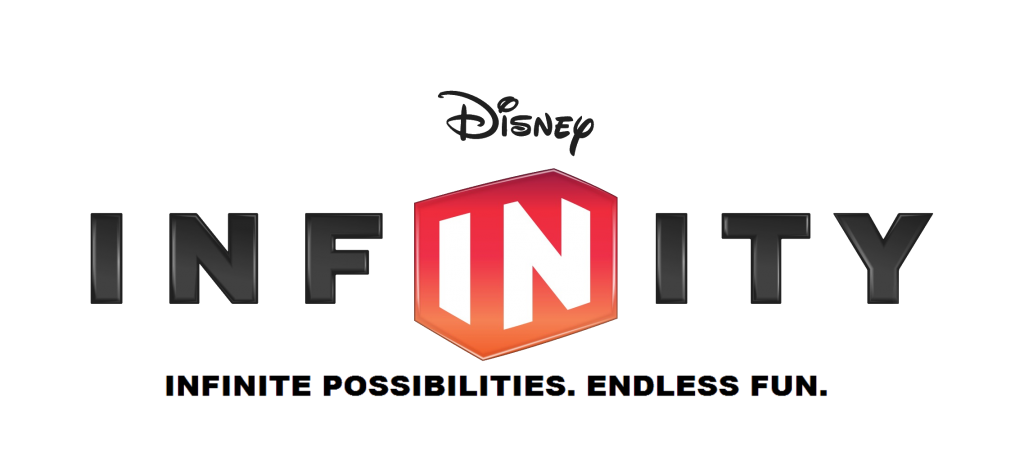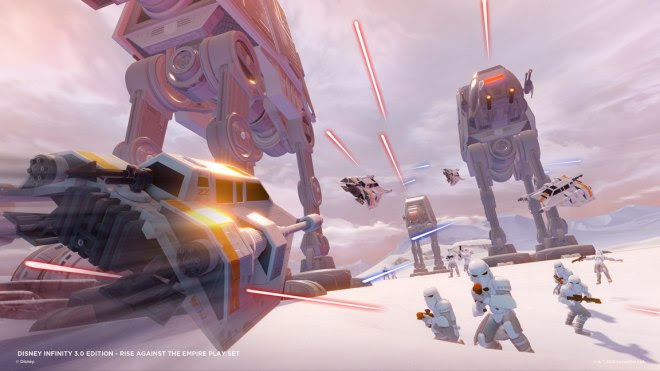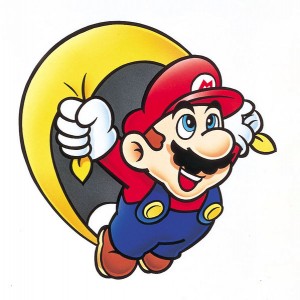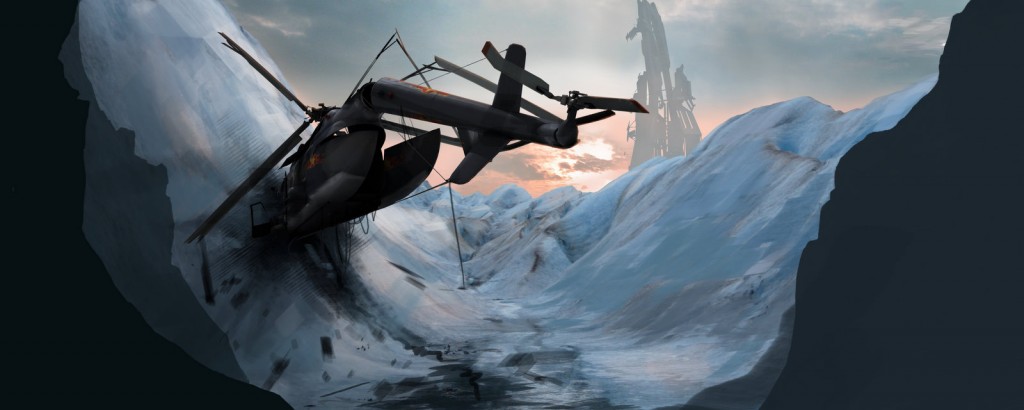Released back in August of 2013 to both compete with Skylanders and offer a decent alternative to a long line of mediocre licensed games, Disney Infinity has since grown to be a multi million dollar franchise with characters, play sets and other content based on all kinds of properties. From Star Wars, to Pirates of the Caribbean, to The Incredibles and Guardians of the Galaxy, there is plenty there for everyone.

So let’s interview Asher Einhorn, in an exclusive for Gaming Reinvented. Having worked on the Pirates of the Caribbean play set among others, and with a history in game designer covering everything from Formula 1 games to licensed tie ins, here are some of his thoughts in regards to game design, the industry’s future and much more besides…
Above: A photo of interviewee Asher Einhorn
1. So first of all, what’s your background? What got you interested in video games?
I always have been. I never had them as a kid, maybe that’s why I found them so fascinating. I used to watch my cousin play them and then I’d design my own on paper, so I guess it started pretty young!
I think what I like about games has evolved over the years, but luckily there’s always been something new to love about them. When I was young like most kids it was things like guns and robots, then as I got a little older it was really immersive stories like Ocarina of Time, and now it’s a fantastic outlet for any and all kinds of creativity. Architecture in level design, storytelling, the much more game-like parts – the core mechanics and so on. And of course the ongoing puzzle of how to make it all work as a medium.

Above: The Legend of Zelda Ocarina of Time was an influence at one point.
2. That said, why design? I see you’ve worked as an animator and an engineer beforehand, so why move into game design?
I was always heading for game design, but there’s no clear path into the industry as one. If there had been I might have taken it, but I’m glad there wasn’t, because being able to do something other than design is so valuable. Having a good knowledge of how other roles in a studio work is pretty vital if you want to be a good designer.
3. Now the main game. What do you think about Disney Infinity in general?
I think it makes up a pretty incredible package. The goal was always something that parents could play with their kids and I think it really achieves that. it definitely captures that Disney magic. It’s an enormous project and it’s on a very tight cycle, so it’s a bit of a shame each game doesn’t have more time to germinate. With more time the worlds could be more full and more alive, but then, I suppose you can say that about most games!



Above: From Disney Films to Marvel to Star Wars, Disney Infinity captures that Disney magic brilliantly.
4. What franchise themed part of Disney Infinity did you enjoy working on the most? Why?
Without a doubt, Pirates of the Caribbean. In fact I can safely speak for quite a few people in the studio. The reason is sort of bizarre – You are looking at your screen from between 8 to 16 hours a day, and it was pretty great being in the Caribbean! I know this sounds silly, but when it comes to finishing the game and you’re pulling the late nights, being in a lovely sunny place (at least virtually) really lifts your spirit. That whole first game was very colourful and nice to develop. In fact the game was split into islands, and I chose mine solely based on weather!
That was a goal on the most recent game – let’s make it a nice place for us to be while we make it. No grey skies, even a winter atmosphere should be bright! Sometimes film-reference stops you from doing that though.
5. What was the situation behind Disney Infinity when you started working on it? How did they advertise jobs for a game that wasn’t officially revealed yet?
Well I was already at the studio, it was that or F1, and I absolutely hate racing games that don’t have some sort of crazy fiction to them – Wipeout or Mario Kart. But as for the project and hiring externals – Avalanche had already made Toy Story 3 so I think that’s probably what they described to people going for the job. They have a very specific style.
Also a lot of people with kids only play games with them now, they don’t have much free time! Some people really jumped at the chance to be involved with it, even people who had previously only worked on hardcore games. It was a nice surprise to get those people involved!
6. So what was it like working on a game as large and complex as Disney Infinity? What was different to say, working on a smaller indie title?
It’s very different. Quite honestly I do not have a deep deep understanding of every part of that game – you can’t, it’s just too big and it’s constantly developing. I knew the linear, story-based playsets inside and out, but the toybox for example – it would take weeks or possibly even months of solid play to experience everything in there. Not to mention min-games. Making sure it all works together was someone elses job, mine was just about trying to get a handle on everything that was relevant to our part of the game. you really had to stay up on it.

Above: Mr Einhorn worked on the Star Wars part of the game, among others.
You really have to get used to the idea that you need to play the game for a good few hours each week – a genuinely tough thing to do when the deadlines are looming.
7. As everyone knows, Disney Infinity is a crossover title where theoretically anything goes; you’ve got numerous characters with different abilities and an even larger amount of unique mechanics. So given this, was it difficult to balance the game properly?
Well, yes, but mainly because it’s so huge, not because of the different properties. There are teams in charge of features that cross the entire game – like enemy design or characters. So they’re usually pretty balanced among themselves. The tough part is one when team makes a change to say, character health. Then if you’re on enemies you have to notice and adjust health and damage accordingly. Communication is the real issue, and in such a big company across so many continents it will always be tricky, but in the end everyone is trying to pull together to make it all gel. Doesn’t mean you don’t get some pretty bad headaches though!
Design changes mid-way through development is something everyone in the industry has experienced, everyone finds hard, and everyone has to just get on with.
8. And how did this challenge influence the game’s level and challenge design?
That’s a good question – the answer is: Massively! Each character in our part of Infinity 1 was pretty much identical, which is less interesting, but easy to design for. In infinity 2 they could all do different things – fly, wall-crawl, super-jump. Designing for all those different metrics is very very difficult.
Ultimately I don’t think it’s always worth it – in the sandbox part of the game those things are fantastic, but in a linear section – how do you make a platforming puzzle when the player just puts on a flying character and hovers over it? Most of the time the solution is to reward their smarts and let them do it. I’m still not actually sure what I think of that. In some ways it’s nice to let people cheat if they want to, but people often do the easy thing, even if it’s boring just because they know they can.

Above: Balancing characters with flight abilities and non flight abilities is also an issue with other games. Like SMW and its cape, or Sonic and Tails’ flight abilities.
The one big restriction in Infinity is that you can’t use any character in any playset, they have to be from that property. I think it’s a shame that this goes against the mash-up theme, but it certainly makes design a little easier.
9. On a non mechanic related note, which Disney films and franchises do you want to see added to Disney Infinity and why?
I would really like to see some traditional Disney added. You end up really getting into what the kids want on these projects because you’re really not designing for yourself. Disney Infinity has so many female players, I think it’s a shame there isn’t a Disney princess playset – Frozen or maybe a mix. I think aesthetically it would be really nice to make something that looked classic too.

Above: Why Frozen isn’t represented (along with a lot of other Disney princess movies) is a bit of a mystery, given their status as some of the company’s most famous and beloved movies.
And if it was for me – Wall-E. I guess I’m still that kid that loves robots sometimes.
10. You mention in this article that you should think of a ‘core’ idea to define a game:
Using a Razor to Make a Lean Focused Game – Gamasutra
What was the core idea, or ‘razor’ for Disney Infinity?
Their tagline is ‘Play without limits’ – I think they went a pretty long way to achieving this, but it’s not really a Razor. In fact, just the opposite! It kind of encourages the inclusion of everything! But then that’s the nature of those projects.
11. But enough Disney Infinity for a moment. What other interesting games have you worked on?
Well other than Disney Infinity I’ve worked on F1 – I’ve worked on Disney Infinity for 3 games so that accounts for a lot of time! F1 was interesting because it was like entering an alien world. I do not understand that sport. Did you know that on average there are three overtakes per race? They’ve invented the most beast-like machines and then designed the dullest possible game around them.
12. And any interesting development stories in regards to those ones?
The best thing about working on F1 was the development-only cheat menus. They did things like test physics, so you could fire missiles to test the destruction, or hammer the jump-impulse button to make all the cars lift into the air like you’re Magneto in X-Men before they all came crashing down around you and exploded into pieces – very realistic physics simulations in those games. Annoying the testers by obliterating their cars while they try and test bugs was very amusing.
13. Okay, we see you post quite a few game design articles at Gamasutra. What articles there did you most enjoy reading?
I really like the postmortems. There were some great XCom articles recently. I like anything to do with design that has a point – I dislike articles that make an observation and then don’t offer a solution. A huge amount of game design is not yet formalised – and as I see it that’s kind of what Gamasutra is about: Trying to find some sort of solid foundation in our young industry.
Some of the Game Design Postmortem articles on Gamasutra
I have a very definite process when it comes to design. I’d really like to see other people lay out theirs. There are a lot of fantastic, but very silent game designers in the world.
14. And for your own… which ones do you consider the most useful for a newer game designer?
Although not my favourite, probably the Razor one. It’s such a simple but important concept – to keep your design simple and focussed. But really to make a good game they’re all important ideas. The one about the link between space and mechanics is so absolutely fundamental to making a game that doesn’t get repetitive in my opinion. There are other ways of course, but that’s probably my favourite.
15. A bit more general now; why do you make games?
Because they combine everything I love. Story-telling, exploration, architecture. And they’re fun to boot. Mostly though I think I make them because no one has made my perfect game yet. If they had, I may just have been someone who plays games. I do love making them for its own sake, but mainly, I just really want to play the games in my head – so I have to make them!
16. A more general industry question now; where do you think is the industry is going? How have things like smartphone apps, digital distribution and Kickstarter affected the industry and its future?
I think there are more and more options open to devs these days, which is great. If I had to predict a change I’d say the mega-teams of 1000+ will be phased out as content creators get replaced by powerful tools used by artists to do things like automatically create rock geometry, or buildings etc. This stuff is around now it’s just not quite there yet. I think it’s a good thing though – more teams means more games and more variety. it also means the games have to make less money and so can be a bit more innovative.
17. How about VR? Do you see a bright future for that technology in games?
I think so. It’s pretty interesting. It’s not really something that appeals to me as a gamer – because I don’t want to be locked away from the world, but it does appeal as a developer. It’s a whole new way of telling stories. I like the look of that Occulus controller a lot. I’d love to play Half-Life 3 with that! Seriously, where the hell is Half-Life 3?

Above: A concept art example for Half Life 3, a game in development for so long that even Valve has no idea when it’ll be released…
18. On a more design related note, what resources would you recommend for anyone wanting to learn how to design games?
Honestly there’s not really much out there I would recommend. Nothing in one place anyway. I would recommend googling the areas that interest you, and just beginning to think about why you want to make games and how you would achieve that. It’s mostly a mental shift more than anything else – the more you get used to thinking about design the easier it becomes. Eventually everything feeds back into what you’re making. Be obsessed. And of course the ultimate way to learn – get a job in the industry. It doesn’t have to be a design job for you to learn about design. It does help if there’s a healthy, open atmosphere in the studio though.
19. And what general advice would you give anyone interested in starting in the industry nowadays?
Learn a skill like programming, art, level design, anything! And get your foot in the door. If you’re passionate enough and hard working enough you’ll make it, but getting that first job can be tough.
Download UE4 and make a level, make the gameplay for it, make a portfolio site and explain how you did it and the design thinking that went into it. Also make something standard – don’t make an abstract indie game, you may want to, but big studios aren’t always capable of reading between the lines – you have to show them you can make what they’re making. You can take this to an extreme too – if you want to work on Halo, make Halo. Add a mechanic. Make a new level. You’ll get the job.
20. Finally, what things do you have in mind for the future? Any interesting new indie game projects you’re currently working on and see lots of potential in?
Well unfortunately I can’t say anything right now, but there might be some news pretty soon. Actually, I apologize but because I can’t give a very good answer this may not be a question worth keeping in there. I’m just bound by NDA’s right now!
And that’s our interview with Asher Einhorn about Disney Infinity! Thanks to Asher for the opportunity to hear about how game design works on triple A projects, as well as the specific challenges involved in creating a game like Disney Infinity. If you want to read his work elsewhere, you can find his Gamasutra blog here, his LinkedIn profile here and his personal portfolio here.
So what did you think of the interview? Did you find it interesting? And what would you want to add or change in Disney Infinity?
